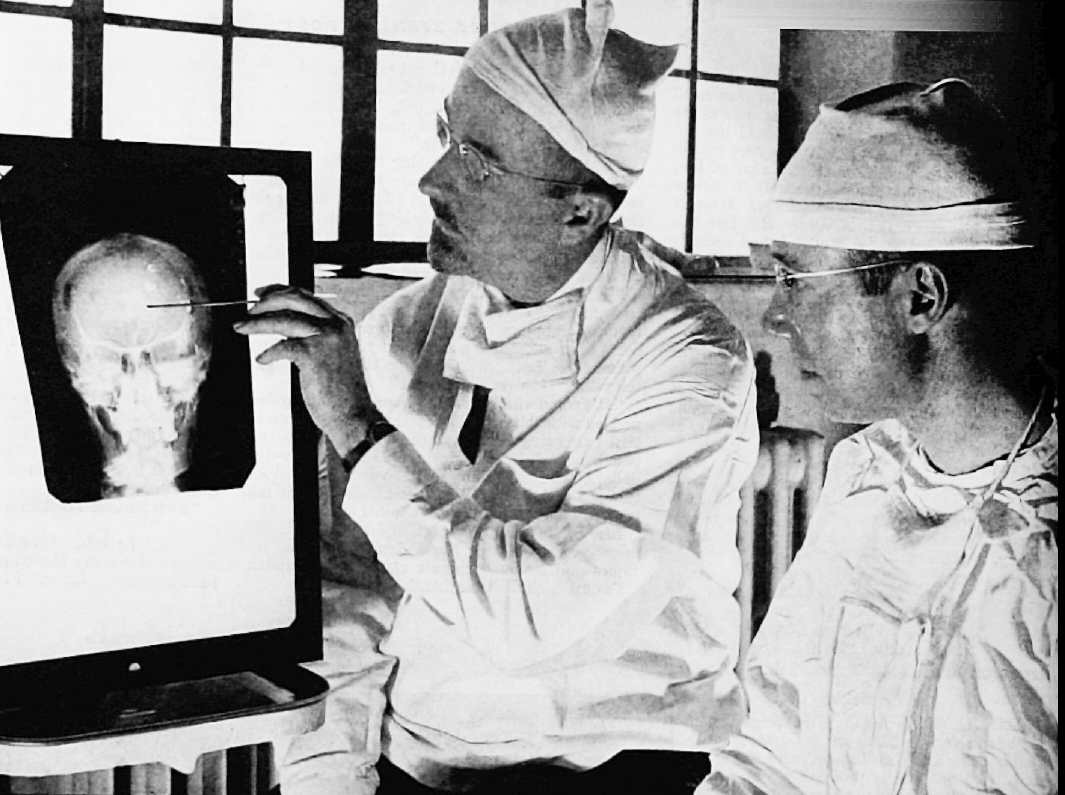
30 medical procedures that have now been abolished
1. Trepanation
 Image source/All That's InterestingBeing one of the oldest forms of surgery in history, Trepanation, or in simpler terms drilling a hole in the skull, has been known to be performed since neolithic times. Although we aren't certain why people did it, experts and historians are pointing towards it being a cure to release demons from the skull. Surprisingly, we have evidence of people surviving the procedure.
Image source/All That's InterestingBeing one of the oldest forms of surgery in history, Trepanation, or in simpler terms drilling a hole in the skull, has been known to be performed since neolithic times. Although we aren't certain why people did it, experts and historians are pointing towards it being a cure to release demons from the skull. Surprisingly, we have evidence of people surviving the procedure.Advertisement
2. Bloodletting
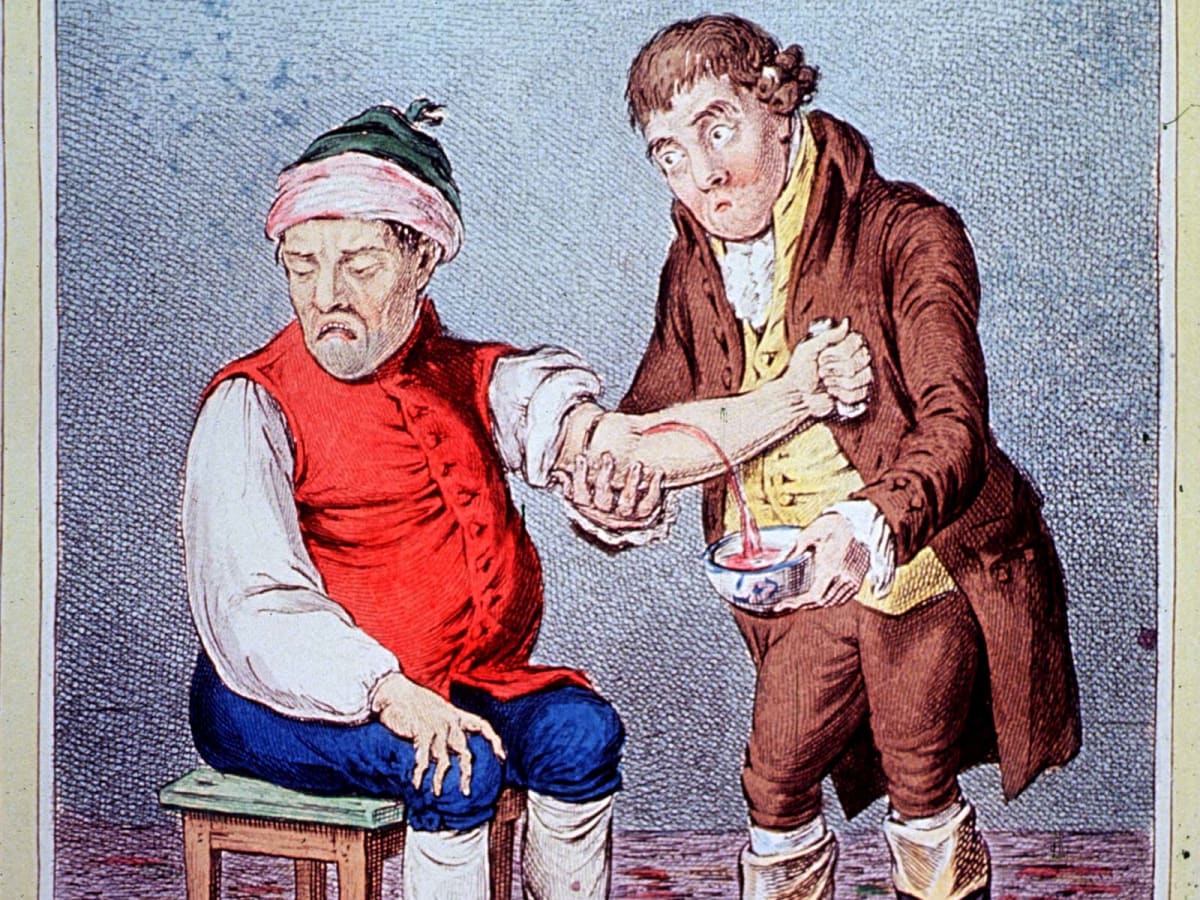 Image source/HistoryYou may be wondering how loosing blood can cure you, it actually doesn't. Bloodletting was based on the flawed scientific theory of the four 'humours'; Blood, Phlegm, black bile and yellow bile. Disease and illness was suspected to be an imbalance of one of these 'humours'. Blood would be removed from the body using Lancets, blades or fleams.
Image source/HistoryYou may be wondering how loosing blood can cure you, it actually doesn't. Bloodletting was based on the flawed scientific theory of the four 'humours'; Blood, Phlegm, black bile and yellow bile. Disease and illness was suspected to be an imbalance of one of these 'humours'. Blood would be removed from the body using Lancets, blades or fleams.Advertisement
3. Lobotomy
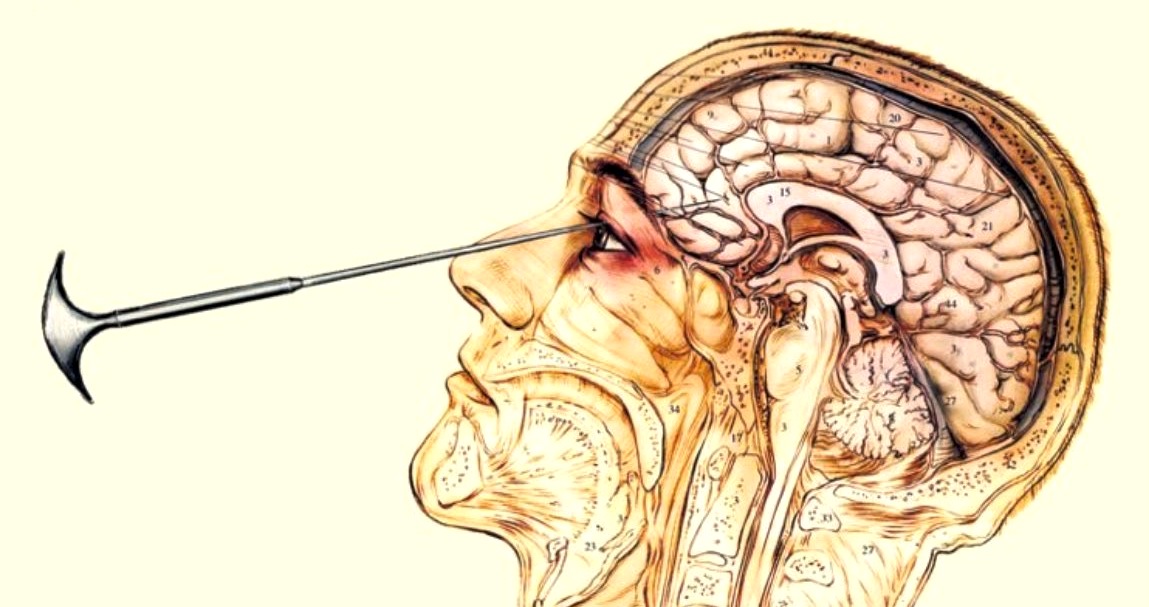 Image source/Literary HubTo think this procedure is more brutal than trepanation, and performed less then 100 years ago is really quite frightening. Lobotomy involved severing connections in the brain's prefrontal lobe with an implement resembling an icepick. Lobotomy was used to cure mentally troubled patients, as a form of a last resort.
Image source/Literary HubTo think this procedure is more brutal than trepanation, and performed less then 100 years ago is really quite frightening. Lobotomy involved severing connections in the brain's prefrontal lobe with an implement resembling an icepick. Lobotomy was used to cure mentally troubled patients, as a form of a last resort.Advertisement
4. Lithotomy
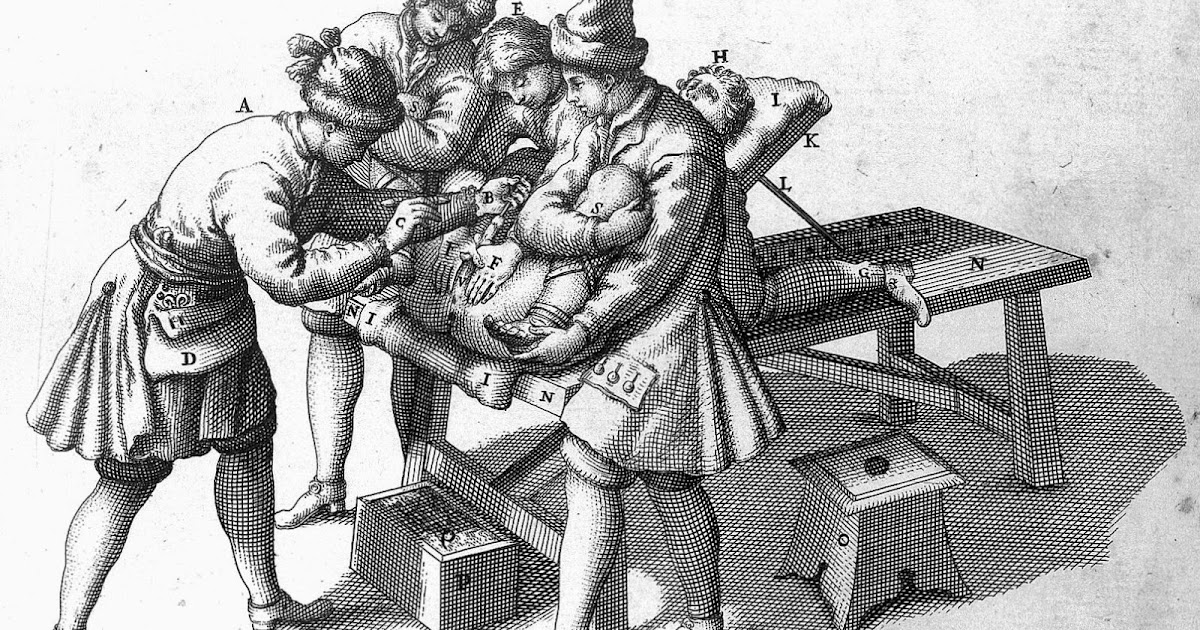 Image source/History of NephrologyWhilst kidney stones are still an issue today, the old school method of extraction has thankfully been forgotten. Ancient Greek and Roman texts refer to a procedure called Lithotomy for the removal of kidney stones. The patient would have to lie on their back, whilst a blade was passed though the perineum into the bladder. Surgeons would then insert their fingers or medical instrument to remove the stones. No surprise, the procedure had a mortality rate around 50%.
Image source/History of NephrologyWhilst kidney stones are still an issue today, the old school method of extraction has thankfully been forgotten. Ancient Greek and Roman texts refer to a procedure called Lithotomy for the removal of kidney stones. The patient would have to lie on their back, whilst a blade was passed though the perineum into the bladder. Surgeons would then insert their fingers or medical instrument to remove the stones. No surprise, the procedure had a mortality rate around 50%.Advertisement
5. Rhinoplasty (old school)
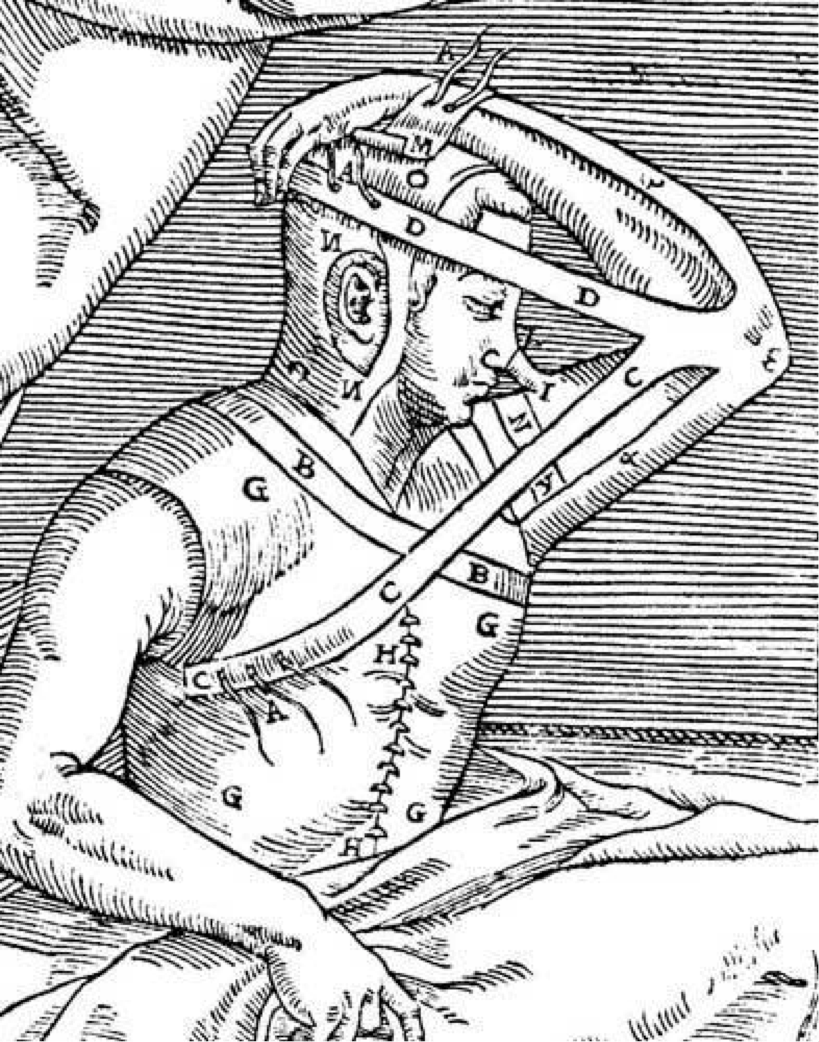 Image source/Kirby Plastic SurgeryAfter sailors returned to Europe from the New Americas in the 16th century, they brought back diseases such as syphilis. The sexually transmitted disease had a known symptom called 'saddle-nose', where the bridge of the nose collapsed. Italian surgeon, Gaspare Tagliacozzi, created a new method of fixing the deformity by attaching the arm to the nose. Once the skin was finally attached he would cut the arm off.
Image source/Kirby Plastic SurgeryAfter sailors returned to Europe from the New Americas in the 16th century, they brought back diseases such as syphilis. The sexually transmitted disease had a known symptom called 'saddle-nose', where the bridge of the nose collapsed. Italian surgeon, Gaspare Tagliacozzi, created a new method of fixing the deformity by attaching the arm to the nose. Once the skin was finally attached he would cut the arm off.Advertisement
6. Cutting teeth
 Image source/Ellicott Mills DentalWith sky high infant mortality rates in 19th century England, people were left puzzled to what could be causing it. The medical minds of them days pointed to the process of teething for the cause of death. To combat teething, doctors had some crazy remedies which included. bleeding, blistering and placing leeches on gums.
Image source/Ellicott Mills DentalWith sky high infant mortality rates in 19th century England, people were left puzzled to what could be causing it. The medical minds of them days pointed to the process of teething for the cause of death. To combat teething, doctors had some crazy remedies which included. bleeding, blistering and placing leeches on gums.Advertisement
7. Heroin as cough medicine
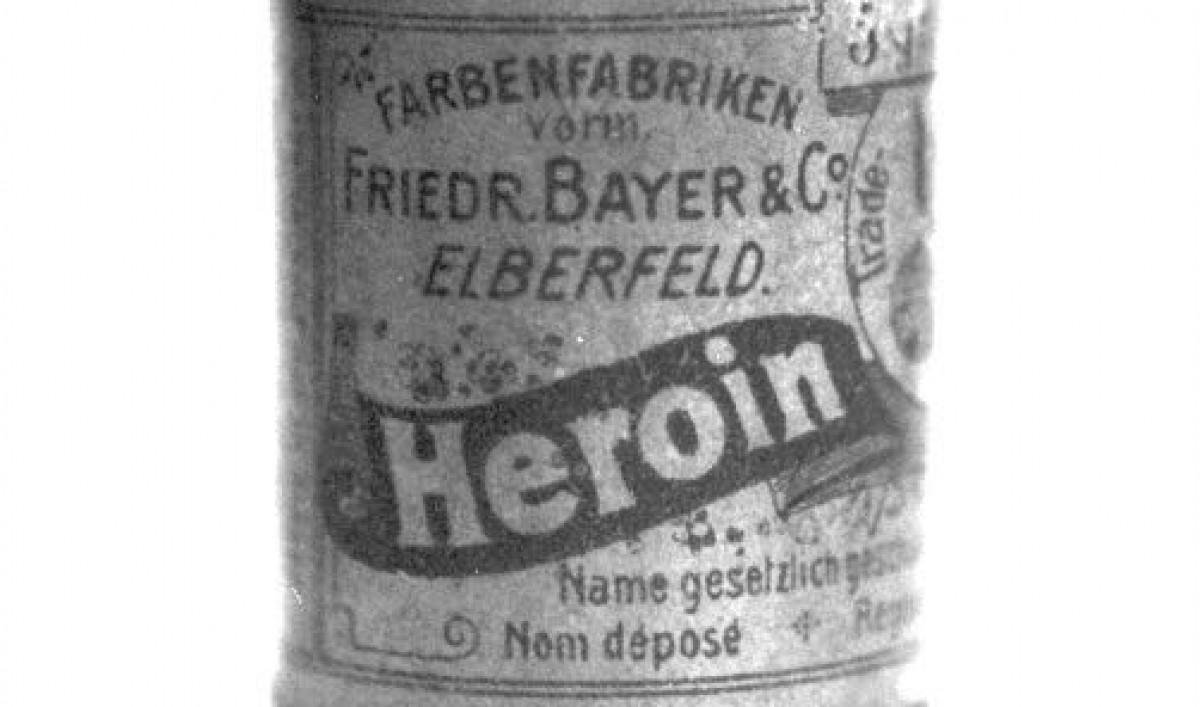 Image source/Public Radio InternationalLooking back, fixing a drug epidemic with another drug wasn't the smartest of ideas. In the late 1880s, heroin became used as a 'non-addictive' substitute for morphine. Heroin was found to be five times more effective the morphine, and was put into aspirin in 1898. The heroin laced aspirin was advertised to children with sore throats, coughs and colds.
Image source/Public Radio InternationalLooking back, fixing a drug epidemic with another drug wasn't the smartest of ideas. In the late 1880s, heroin became used as a 'non-addictive' substitute for morphine. Heroin was found to be five times more effective the morphine, and was put into aspirin in 1898. The heroin laced aspirin was advertised to children with sore throats, coughs and colds.Advertisement
8. Tobacco smoke enema
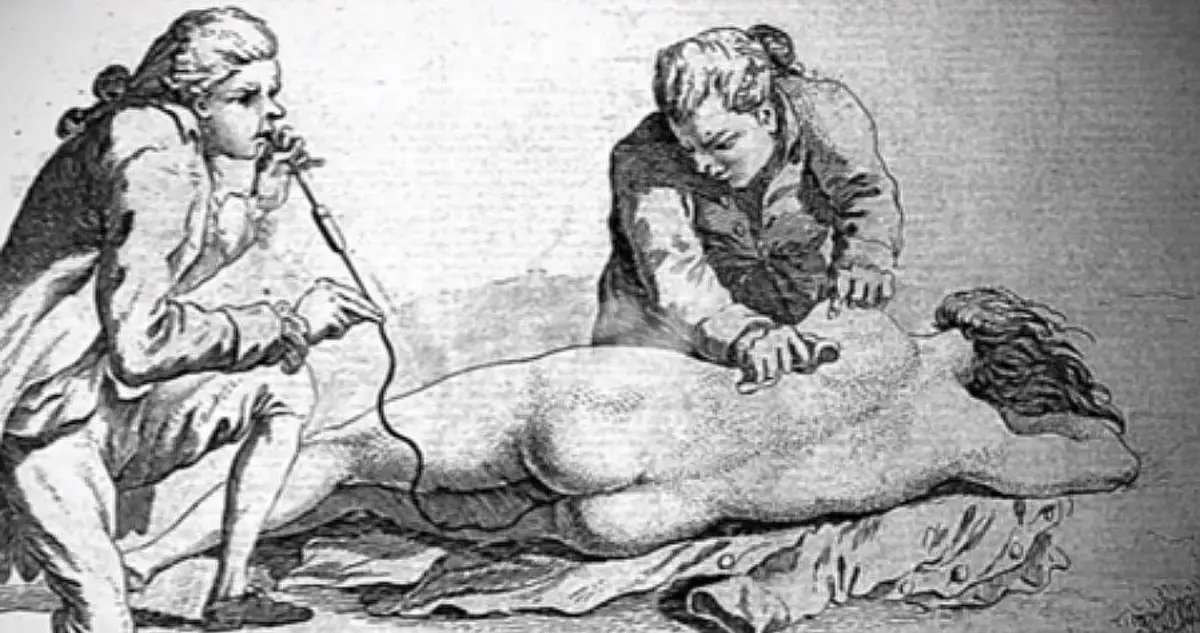 Image source/All That's InterestingYou've heard the saying 'blowing smoke up your backside', but you may not have known it was a form of treatment in the past. The process consisted of blowing tobacco smoke into the rectum by enema. It was commonly used to treat gut pain and ease symptoms of a hernia. The process began to fall off after it was discovered the nicotine in the smoke was poisonous.
Image source/All That's InterestingYou've heard the saying 'blowing smoke up your backside', but you may not have known it was a form of treatment in the past. The process consisted of blowing tobacco smoke into the rectum by enema. It was commonly used to treat gut pain and ease symptoms of a hernia. The process began to fall off after it was discovered the nicotine in the smoke was poisonous.Advertisement
9. Shock treatments for impotence
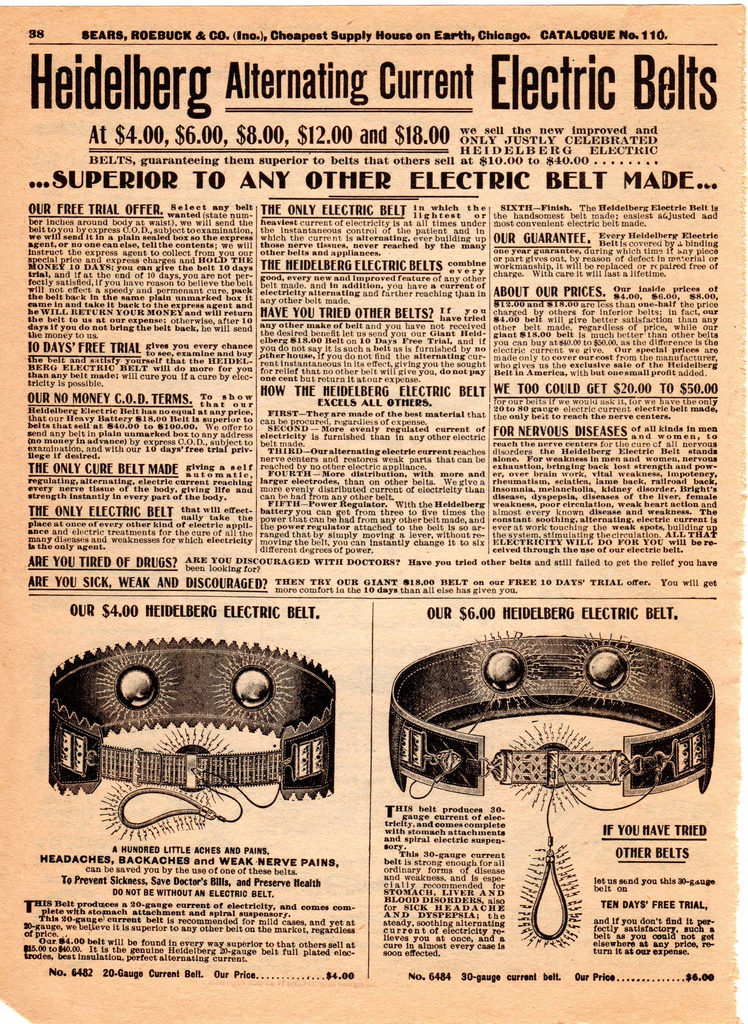 Image source/History CollectionImpotence was considered a huge sign of weakness back in the 19th century. By the end of the 1800s, 'electropathic belts' or 'electric belts' were beginning to be used on 'weak men.' The treatment was commonly used by quack doctors, who were fraudulent and usually ill advised, to cure kidney pains, backaches and most importantly male sexual problems.
Image source/History CollectionImpotence was considered a huge sign of weakness back in the 19th century. By the end of the 1800s, 'electropathic belts' or 'electric belts' were beginning to be used on 'weak men.' The treatment was commonly used by quack doctors, who were fraudulent and usually ill advised, to cure kidney pains, backaches and most importantly male sexual problems.Advertisement
10. Water Boarding
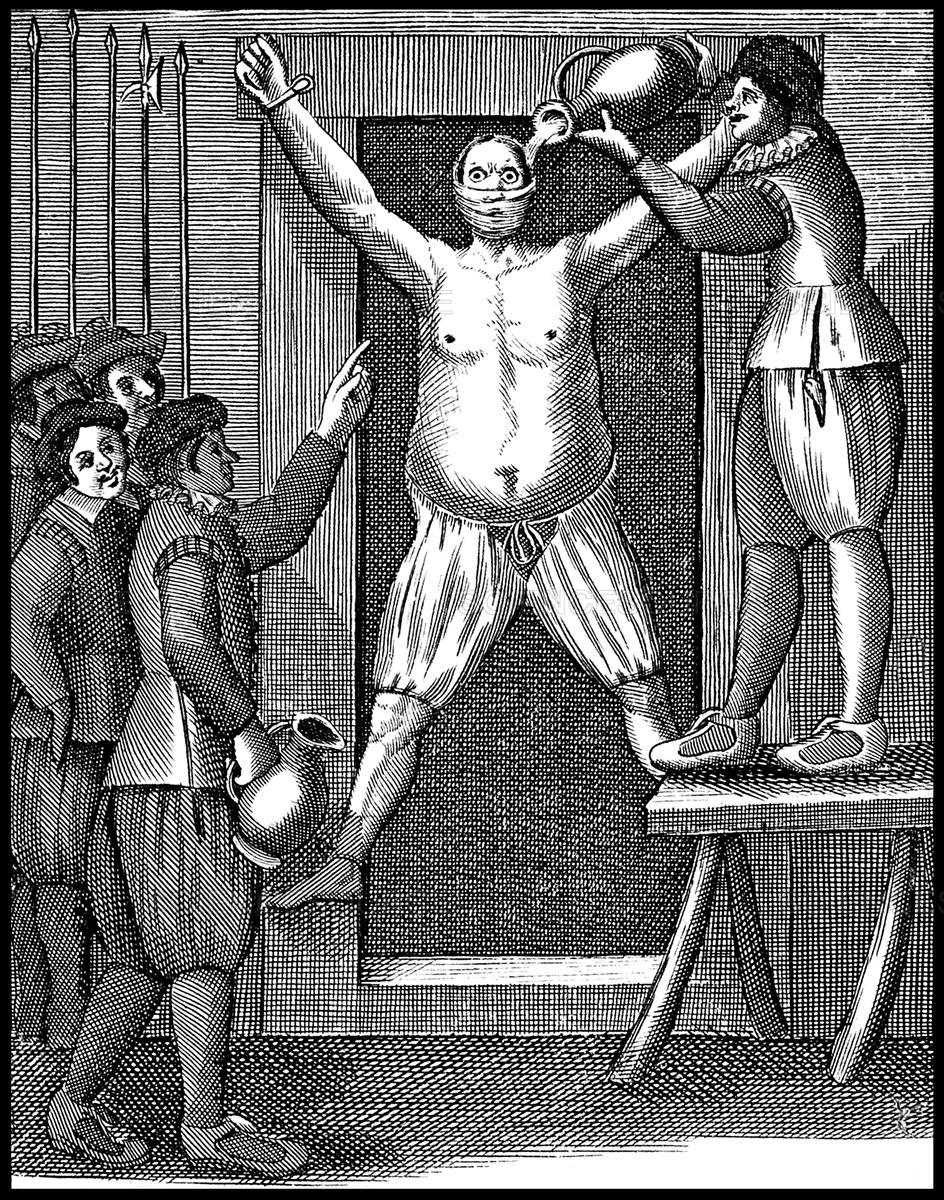 Image source/Science Source ImagesPrior to it being a common form of torture, waterboarding had actually been used to help cure mental health disorders. The wet form of shock therapy would be used until the patient lost consciousness, after which they believed their madness had been cured. There're also reports of patients being unknowingly dunked into cold water in an attempt to cure insanity.
Image source/Science Source ImagesPrior to it being a common form of torture, waterboarding had actually been used to help cure mental health disorders. The wet form of shock therapy would be used until the patient lost consciousness, after which they believed their madness had been cured. There're also reports of patients being unknowingly dunked into cold water in an attempt to cure insanity.Advertisement
11. Purposeful Malaria
 Image source/ProfMoosaIn 1917, Austrian doctor Julius Wagner-Jauregg decided it would be a smart idea to cure syphilis...with malaria! He would inject syphilis infected patients with malaria, as he believed malaria would generate a fever which could kill the syphilis. Shockingly his experiment worked, as syphilis only killed 15% of his patients, earning him a Nobel Prize in 1927. Syphilis can now just be cured with penicillin.
Image source/ProfMoosaIn 1917, Austrian doctor Julius Wagner-Jauregg decided it would be a smart idea to cure syphilis...with malaria! He would inject syphilis infected patients with malaria, as he believed malaria would generate a fever which could kill the syphilis. Shockingly his experiment worked, as syphilis only killed 15% of his patients, earning him a Nobel Prize in 1927. Syphilis can now just be cured with penicillin.Advertisement
12. Xenotransplantation
 Image source/The ConversationThe 1920s was not the best time in history to be having troubles in the bedroom. There was no viagra, but there was another option, get your testicles swapped with a monkey. Dr. Serge Voronoff would happily switched a man's non-functioning testicles with those of a monkeys to try get the blood pumping again. Most patients eventually died from the frightening procedure.
Image source/The ConversationThe 1920s was not the best time in history to be having troubles in the bedroom. There was no viagra, but there was another option, get your testicles swapped with a monkey. Dr. Serge Voronoff would happily switched a man's non-functioning testicles with those of a monkeys to try get the blood pumping again. Most patients eventually died from the frightening procedure.Advertisement
13. Corpse medicine
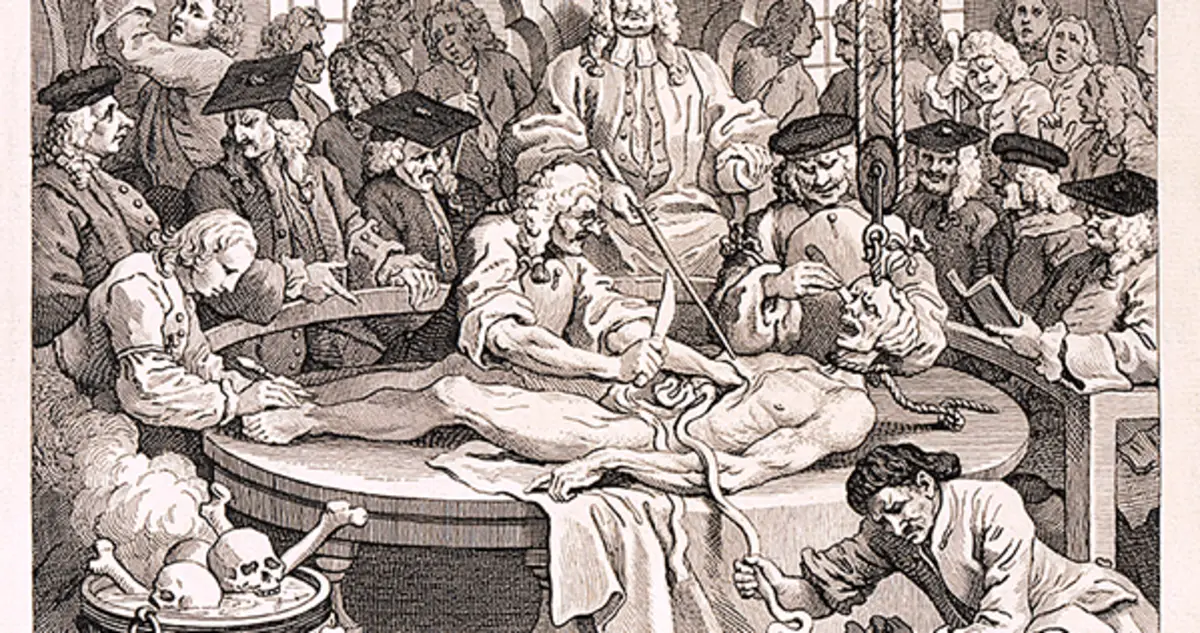 Image source/All That's InterestingThis method of treatment began to gain popularity in the 16th and 17th century, when medicines started to contain human bone, fat and blood to help cure illness and disease. Most famously, King Charles II of England had his own formula called 'King's drops.' This concoction would contain human skull mixed with alcohol.
Image source/All That's InterestingThis method of treatment began to gain popularity in the 16th and 17th century, when medicines started to contain human bone, fat and blood to help cure illness and disease. Most famously, King Charles II of England had his own formula called 'King's drops.' This concoction would contain human skull mixed with alcohol.Advertisement
14. Plombage
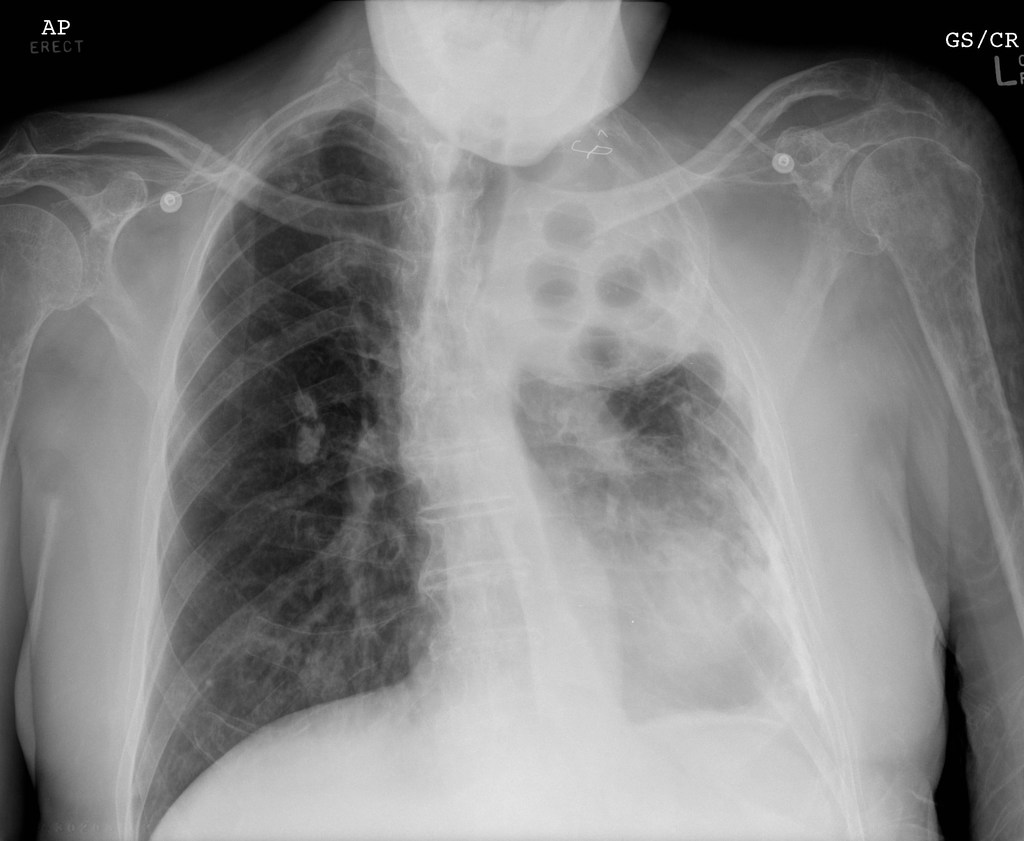 Image source/RadiopaediaBefore there was any effective medicines for tuberculosis, plombage was used to teat the disease from the 1930s to the 1950s. Plombage would be the process of forcefully collapsing a lung , as scientist believed a collapsed lung could heel quicker. The treatment however carried numerous health risks, including infection and hemorrhages.
Image source/RadiopaediaBefore there was any effective medicines for tuberculosis, plombage was used to teat the disease from the 1930s to the 1950s. Plombage would be the process of forcefully collapsing a lung , as scientist believed a collapsed lung could heel quicker. The treatment however carried numerous health risks, including infection and hemorrhages.Advertisement
15. Hemiglossectomy 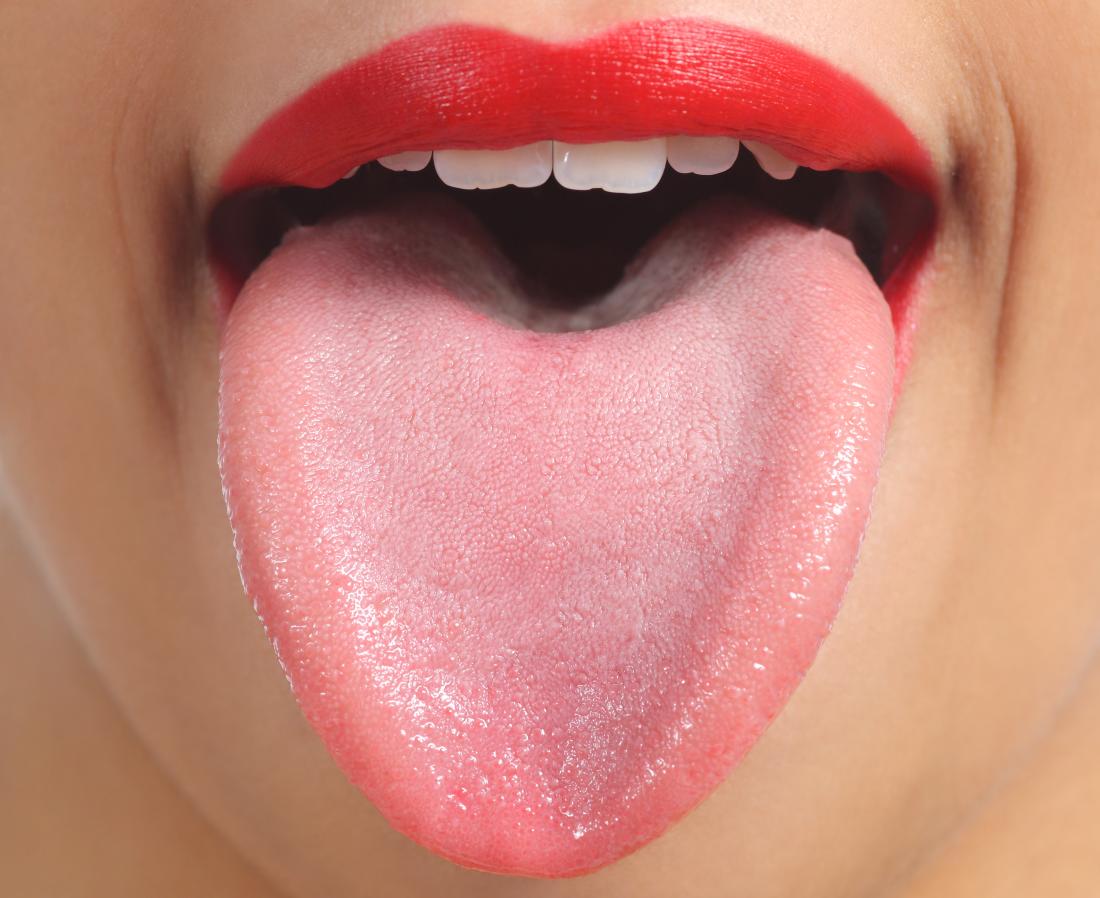
Image source/Medical News TodayModern hemiglossectomy is a safe and effective operation to remove part of the tongue, often to help prevent oral cancer. Back in the 19th century it was a barbaric and ludicrous experiment to correct peoples stutters. Doctors would remove part of the tongue, as they believed that is what caused speech issues, often leading to terrible infections and usually death.Advertisement
16. Medicine with mercury
 Image source/Toronto StarThroughout history, a syphilis diagnosis was incredibly grim news. At the turn of the 20th century, doctor's best reply to treating the disease involved administering mercury to the patient. Mercury vapour is very toxic to humans, and can be fatal in high enough doses. Mercury was continued to be used up until penicillin was discovered.
Image source/Toronto StarThroughout history, a syphilis diagnosis was incredibly grim news. At the turn of the 20th century, doctor's best reply to treating the disease involved administering mercury to the patient. Mercury vapour is very toxic to humans, and can be fatal in high enough doses. Mercury was continued to be used up until penicillin was discovered.Advertisement
17. Sitting in a rotting whale carcus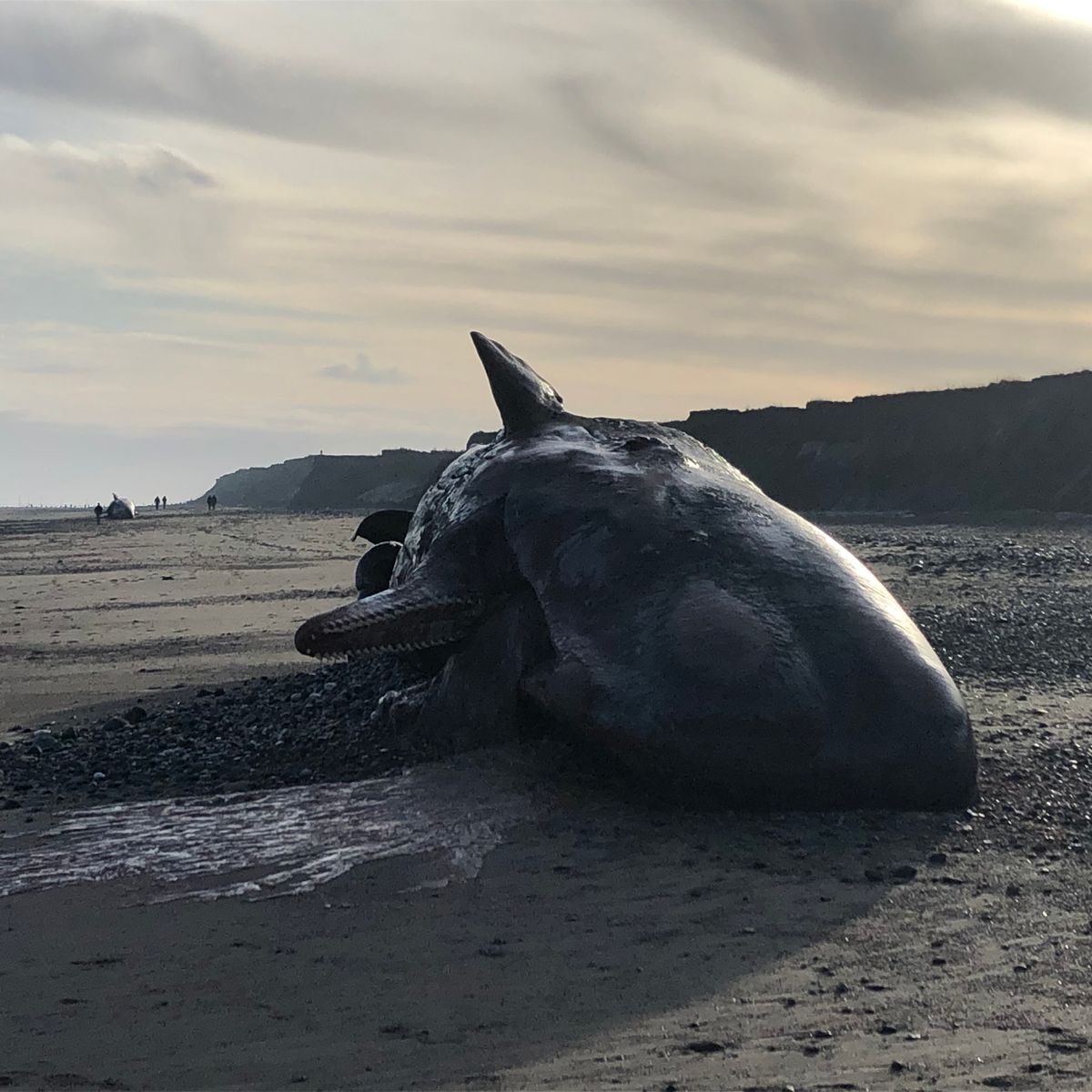
Image source/Hull LiveThis cutting-edge 'treatment' developed in the 19th century was supposedly able to treat rheumatism. The procedure involved staying inside a dead whale for 30 hours, as it was believed to reliev joint pain for up to 12 months. Clearly, there is no scientific evidence to this, but it seems people were willing to give it a try.Advertisement
18. Radium water
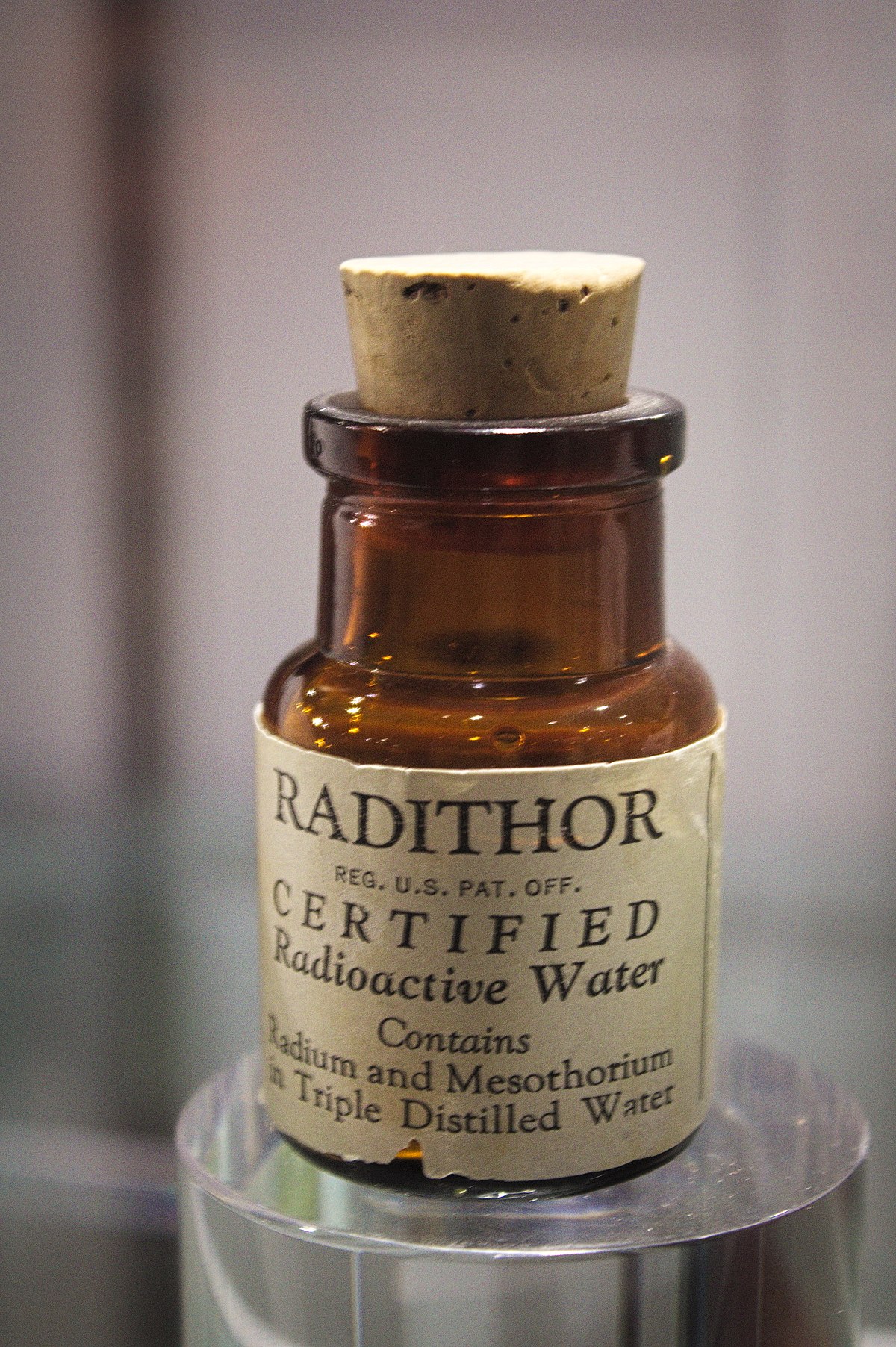 Image source/WikipediaBefore we fully understood the dangers of radioactivity on the body, radium was routinely added to water for patients, and was lauded for its abundance of benefits. With people claiming it helped ease arthritis pain, as well as impotence, it became apparent it was an awful idea once people starting dropping dead from the poisonous water.
Image source/WikipediaBefore we fully understood the dangers of radioactivity on the body, radium was routinely added to water for patients, and was lauded for its abundance of benefits. With people claiming it helped ease arthritis pain, as well as impotence, it became apparent it was an awful idea once people starting dropping dead from the poisonous water.Advertisement
19. Starvation diets for Aneurysms
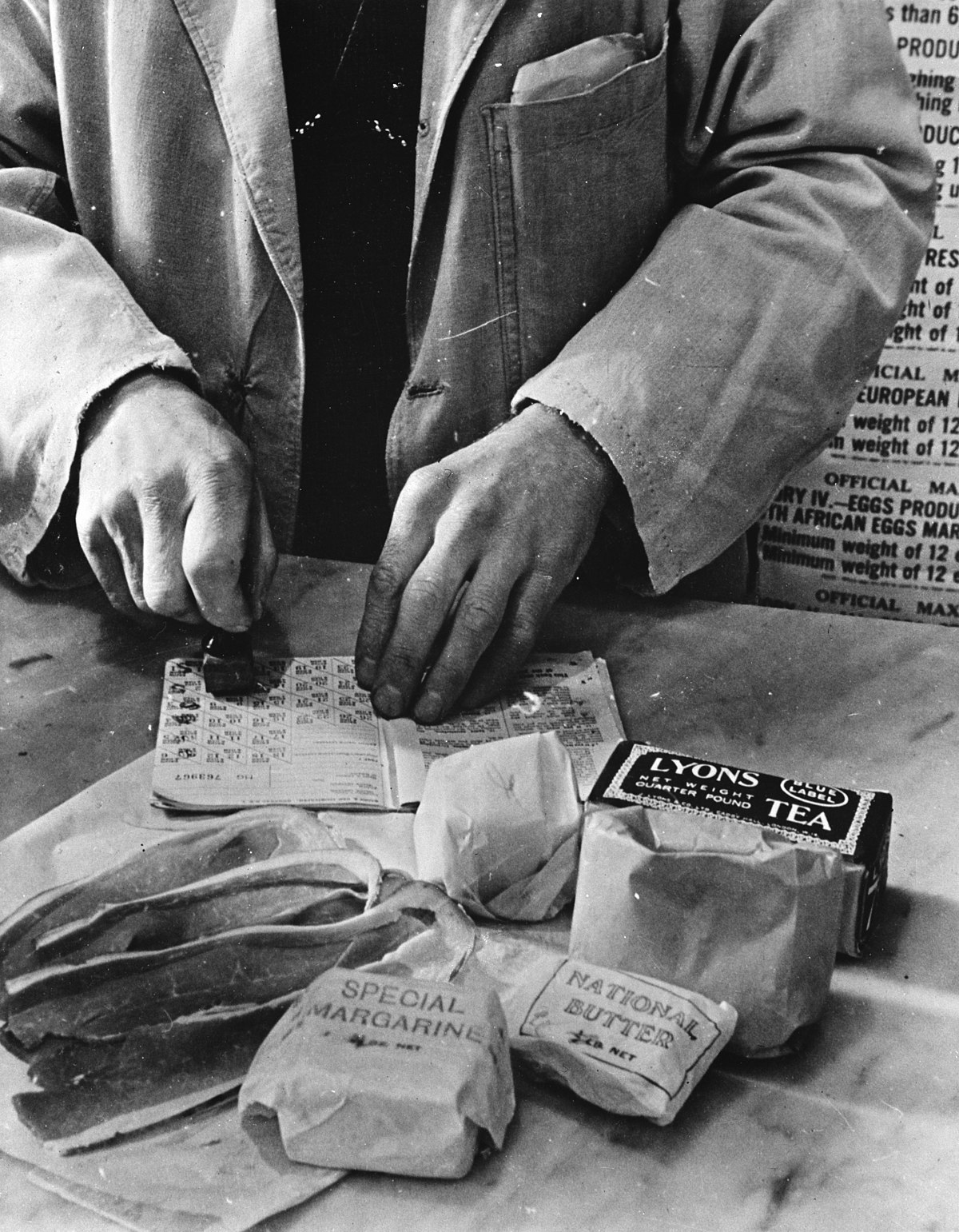 Image source/WikipediaDoctors at the start of the 20th century's approach to treating aneurysms was by lowering the force at which the heart pumped. Their mad method in achieving this putting patients on an extremely strict diet with minimal food. Whilst this was all they could offer at the time, we can now treat aneurysms with minimally invasive surgeries.
Image source/WikipediaDoctors at the start of the 20th century's approach to treating aneurysms was by lowering the force at which the heart pumped. Their mad method in achieving this putting patients on an extremely strict diet with minimal food. Whilst this was all they could offer at the time, we can now treat aneurysms with minimally invasive surgeries.Advertisement
20. Peg legs
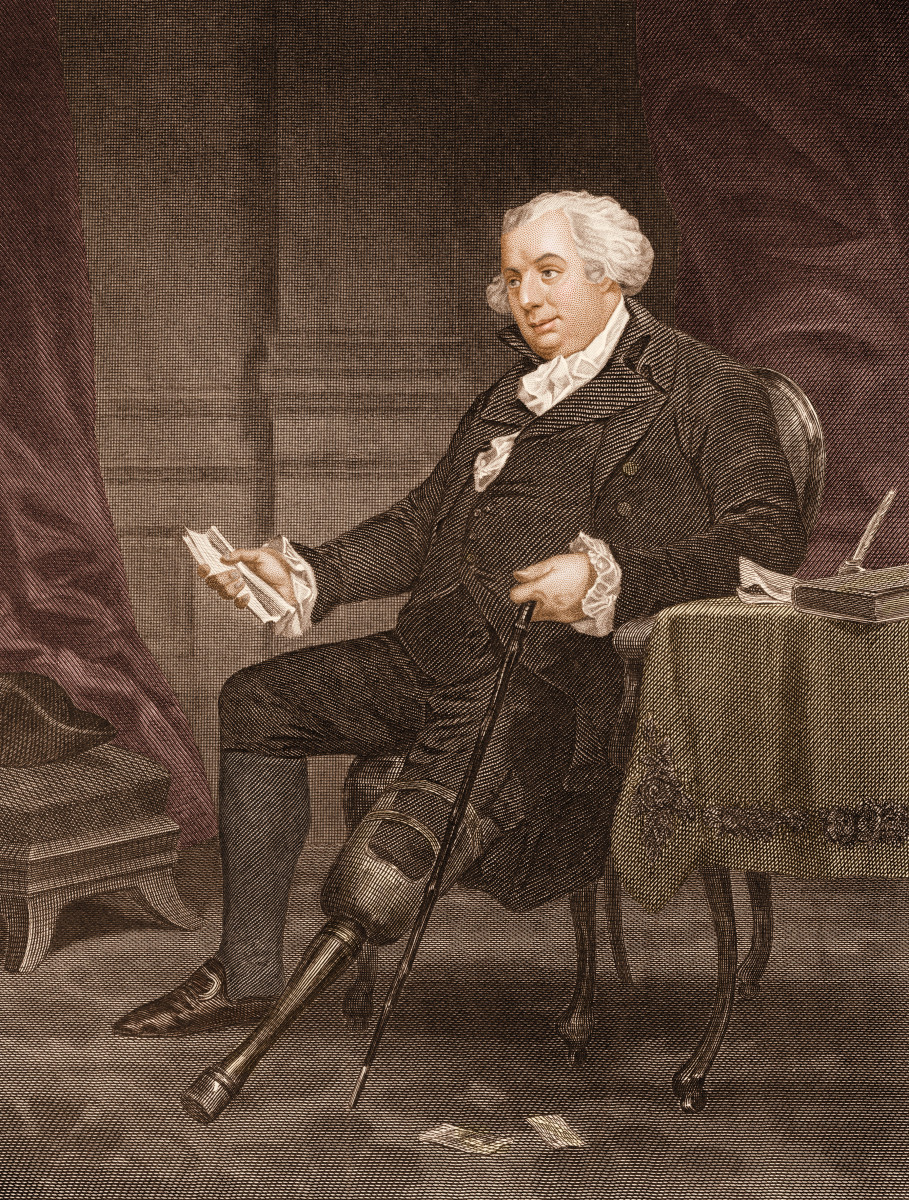 Image source/HistoryModern prosthetics can be unbelievably advanced and fine tuned, however prior to them we had some fairly shabby attempts. Wooden pegs were used prior to advanced prosthetics. They would have to be jammed into hollowed out cavities in the leg, or strapped to the patients waist. Peg legs were rarely the perfect size and would often cause discomfort to the individual.
Image source/HistoryModern prosthetics can be unbelievably advanced and fine tuned, however prior to them we had some fairly shabby attempts. Wooden pegs were used prior to advanced prosthetics. They would have to be jammed into hollowed out cavities in the leg, or strapped to the patients waist. Peg legs were rarely the perfect size and would often cause discomfort to the individual.Advertisement
21. Gasoline to cure head lice
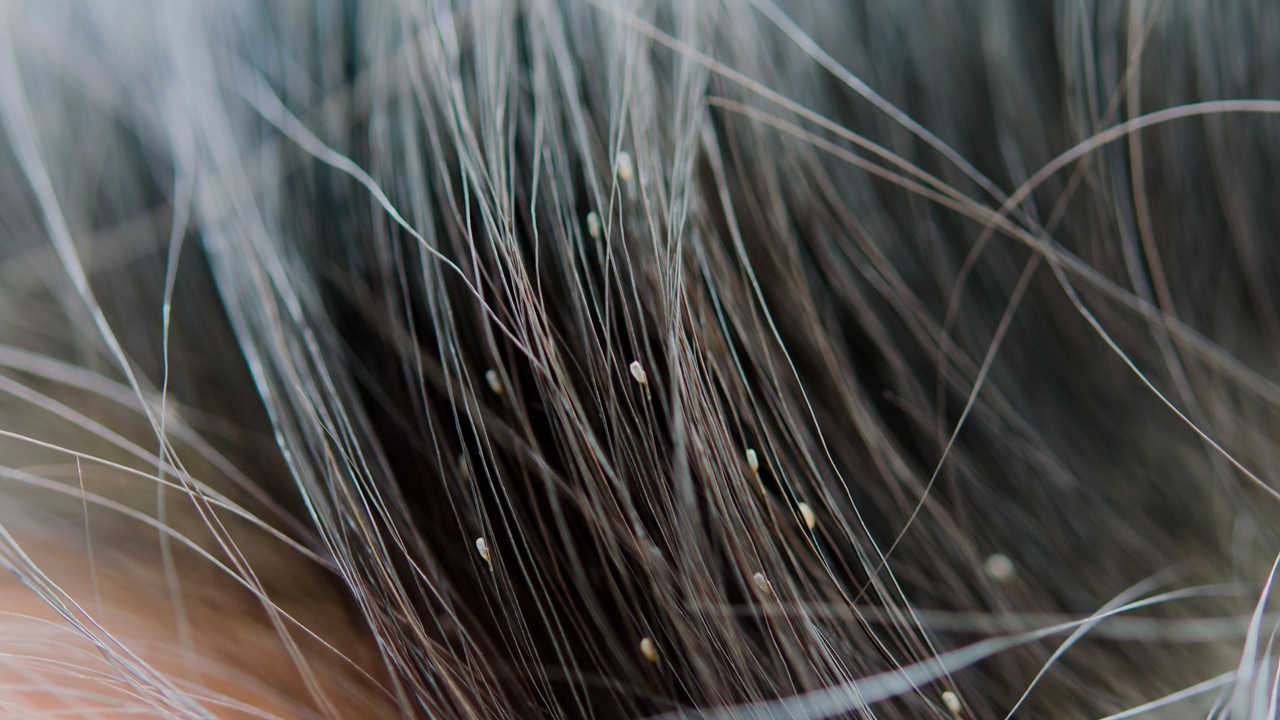 Image source/Willis-Knighton Health SystemThis may seem like a waste of gas, especially with the current prices. However, in the early 20th century, patients suffering with a serious case of headlice would have their scalps doused in gasoline or kerosene. Whilst this was effective in some way, it would make the patient very dangerous if they was anywhere near an open flame.
Image source/Willis-Knighton Health SystemThis may seem like a waste of gas, especially with the current prices. However, in the early 20th century, patients suffering with a serious case of headlice would have their scalps doused in gasoline or kerosene. Whilst this was effective in some way, it would make the patient very dangerous if they was anywhere near an open flame.Advertisement
22. Treating haemorrhoids with hot irons
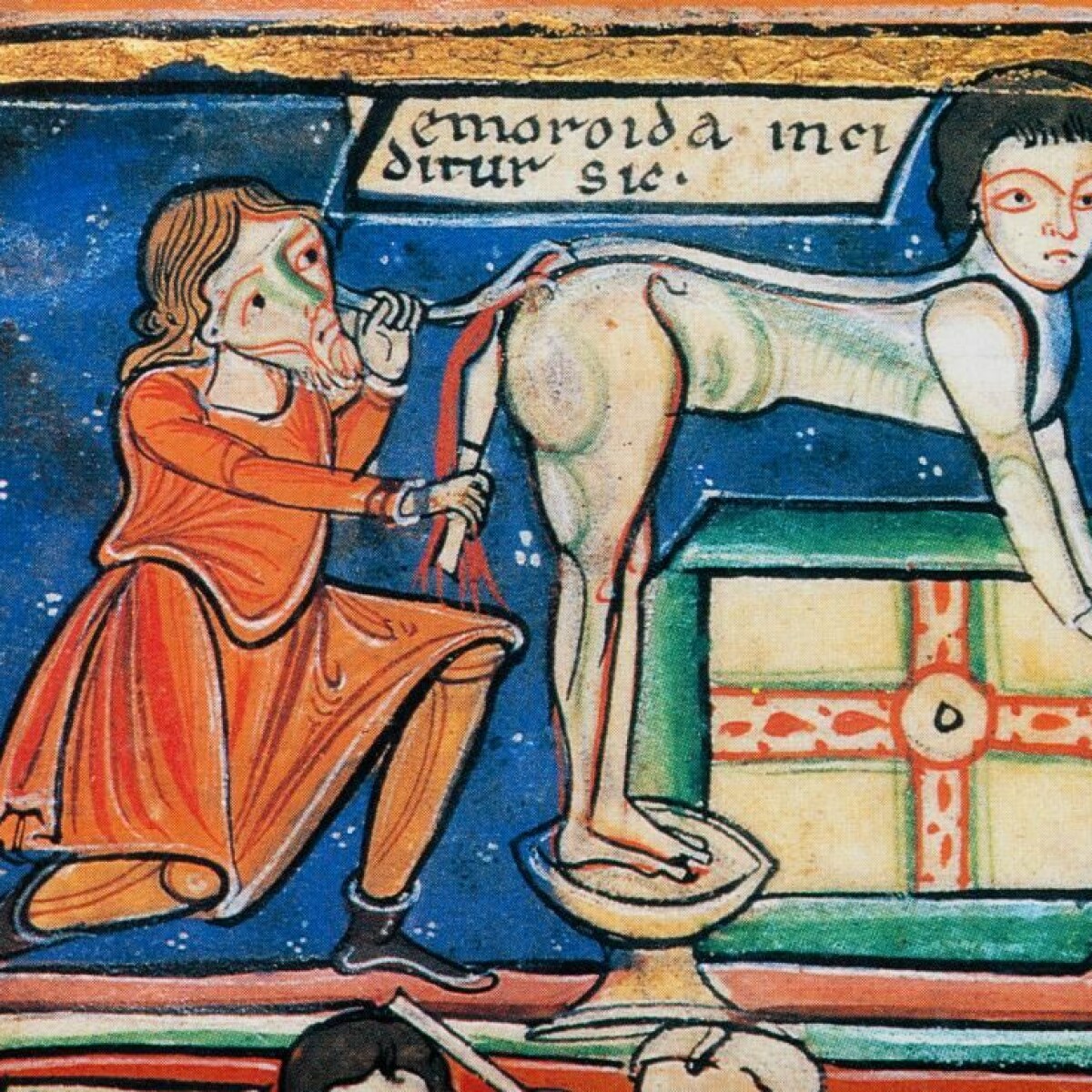 Image source/ScienceNordicMedieval manuscripts from the 12th century revealed that their treatment for severe haemorrhoids was cauterisation. Surgeons would heat up an iron rod until it was glowing white, then place it on the affected area to burn off the wound. Hearing about this must make you grateful of modern day surgery.
Image source/ScienceNordicMedieval manuscripts from the 12th century revealed that their treatment for severe haemorrhoids was cauterisation. Surgeons would heat up an iron rod until it was glowing white, then place it on the affected area to burn off the wound. Hearing about this must make you grateful of modern day surgery.Advertisement
23. Arsenic for Fevers and Headaches
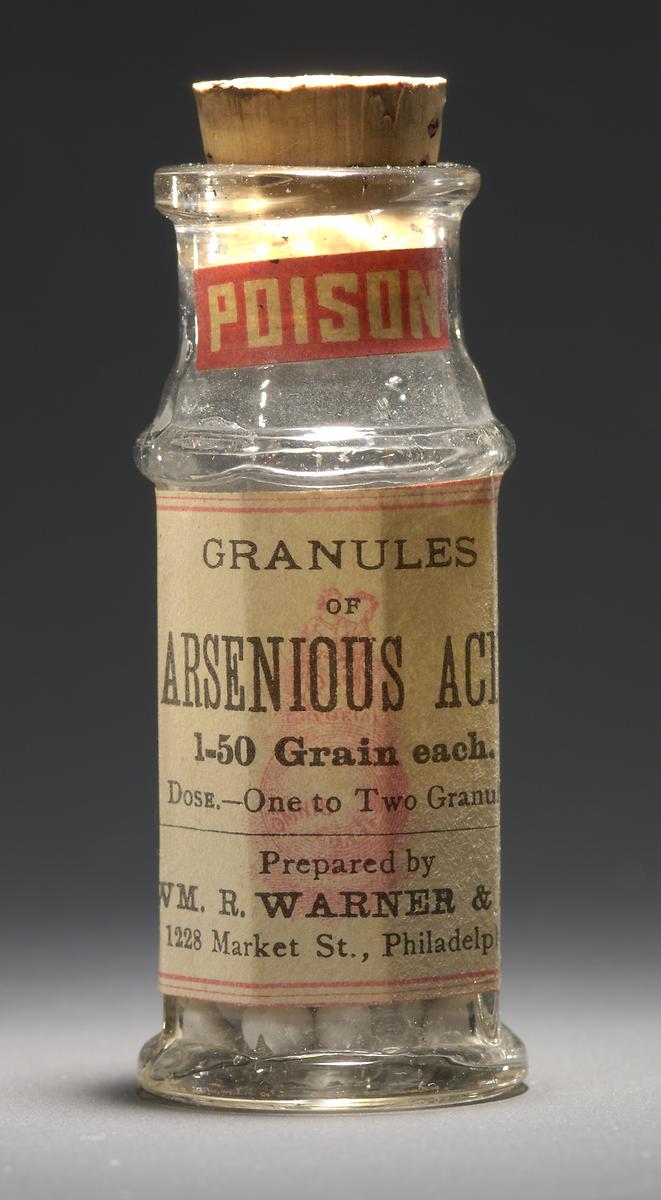 Image source/National Library of MedicineSimilar to mercury, arsenic is also highly poisonous for human consumption. This didn't stop early 20th century doctors prescribing medicines containing the poison to patients suffering form fevers, headaches, syphilis, and other blood diseases.
Image source/National Library of MedicineSimilar to mercury, arsenic is also highly poisonous for human consumption. This didn't stop early 20th century doctors prescribing medicines containing the poison to patients suffering form fevers, headaches, syphilis, and other blood diseases.Advertisement
24. Snake Oil
 Image source/The ConversationThis may sound like a silly name for something a dodgy man on the street might try and sell you, but it is in fact a real thing. Extracted from the oil of Chinese water snakes, the remedy likely arrived in the U.S. in the 1800s. Whilst original snake oil did have healing properties, many fake sellers ruined the brand, giving the truly beneficial treatment a bad reputation.
Image source/The ConversationThis may sound like a silly name for something a dodgy man on the street might try and sell you, but it is in fact a real thing. Extracted from the oil of Chinese water snakes, the remedy likely arrived in the U.S. in the 1800s. Whilst original snake oil did have healing properties, many fake sellers ruined the brand, giving the truly beneficial treatment a bad reputation.Advertisement
25. Metallic Catheters
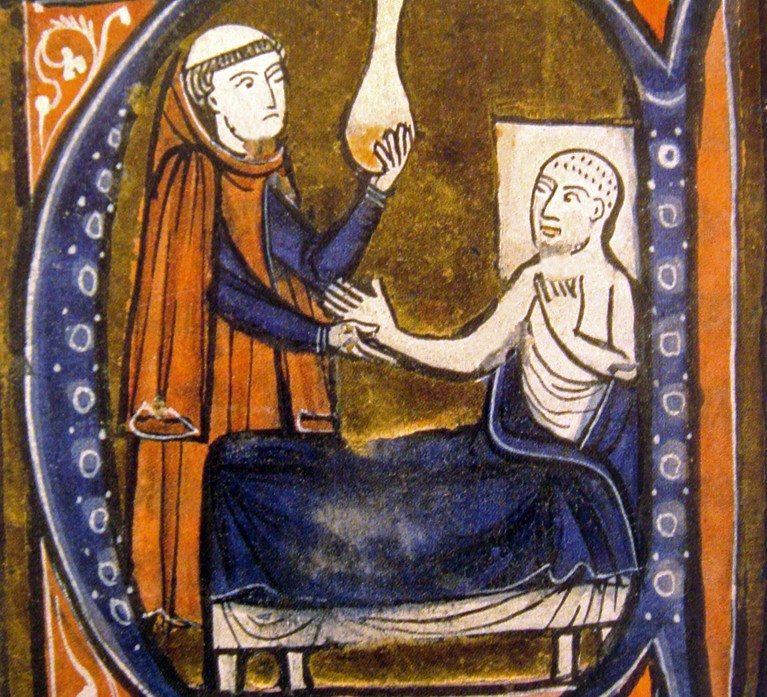 Image source/History ExtraMedieval catheters were used to relieve painful urinary diseases. Back in medieval times, there was a huge lack of antibiotics, and a rife amount of highly contagious viruses, resulting in many people suffering from blocked bladders. Catheters would be painfully placed up the urethra and into the bladder.
Image source/History ExtraMedieval catheters were used to relieve painful urinary diseases. Back in medieval times, there was a huge lack of antibiotics, and a rife amount of highly contagious viruses, resulting in many people suffering from blocked bladders. Catheters would be painfully placed up the urethra and into the bladder.Advertisement
26. Tobacco
 Image source/The conversationEveryone knows the heath complications surrounding smoking, so it may come as a shock that during a 1665 plague outbreak in London, the schoolchildren were told to smoke cigarettes. At the time it was believed that smoking acted as a disinfectant, similar to the 'tobacco smoke enemas.'
Image source/The conversationEveryone knows the heath complications surrounding smoking, so it may come as a shock that during a 1665 plague outbreak in London, the schoolchildren were told to smoke cigarettes. At the time it was believed that smoking acted as a disinfectant, similar to the 'tobacco smoke enemas.'Advertisement
27. Epilepsy treated with powder from hair and deer bones
 Image source/Encyclopedia BritannicaThe Book of Phisick, which was wrote in the 1700s, contained a remedy for patients with epilepsy. The book advised people to turn a deer's leg bone into powder, mix it with the hair of a strong man and drink it prior to a full moon. As daft as it may seem, people would have had to rely on books like this for medication.
Image source/Encyclopedia BritannicaThe Book of Phisick, which was wrote in the 1700s, contained a remedy for patients with epilepsy. The book advised people to turn a deer's leg bone into powder, mix it with the hair of a strong man and drink it prior to a full moon. As daft as it may seem, people would have had to rely on books like this for medication.Advertisement
28. Astrological therapy
 Image source/OPEN MIND HLOISTICSOnly in medieval times could they determine treatment on somebody based on whether Jupiter is aligned with Venus. During the Middle Ages, they would associate particular body parts with certain star signs, as well as the methods of treatment which seems ridiculous.
Image source/OPEN MIND HLOISTICSOnly in medieval times could they determine treatment on somebody based on whether Jupiter is aligned with Venus. During the Middle Ages, they would associate particular body parts with certain star signs, as well as the methods of treatment which seems ridiculous.Advertisement
29. Chloroform for asthma
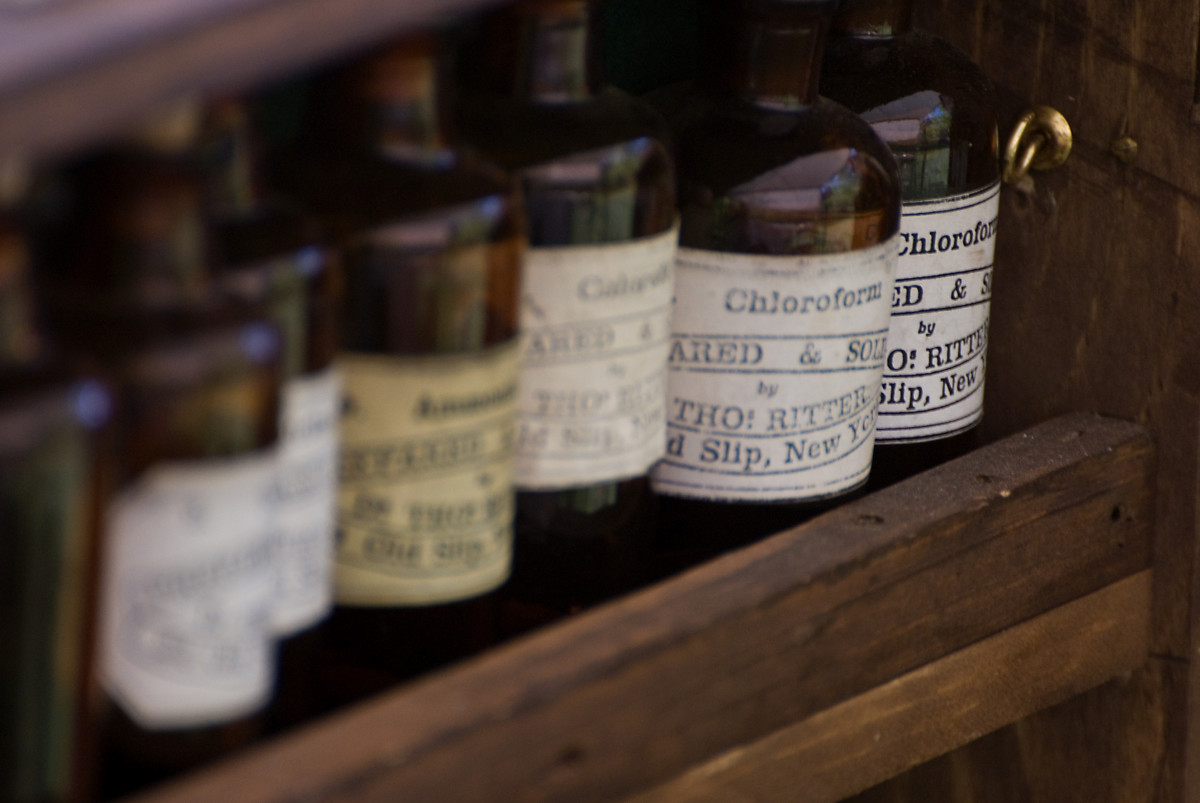 Image source/HistoryDespite being toxic to humans and potentially cancerous depending on the levels of exposure, early 20th century doctors decided to treat asthmatic patients with it. Whilst some patients did experience signs of their symptoms relieving, the symptom of death would soon after follow.
Image source/HistoryDespite being toxic to humans and potentially cancerous depending on the levels of exposure, early 20th century doctors decided to treat asthmatic patients with it. Whilst some patients did experience signs of their symptoms relieving, the symptom of death would soon after follow.Advertisement
30. Cocaine for hay fever
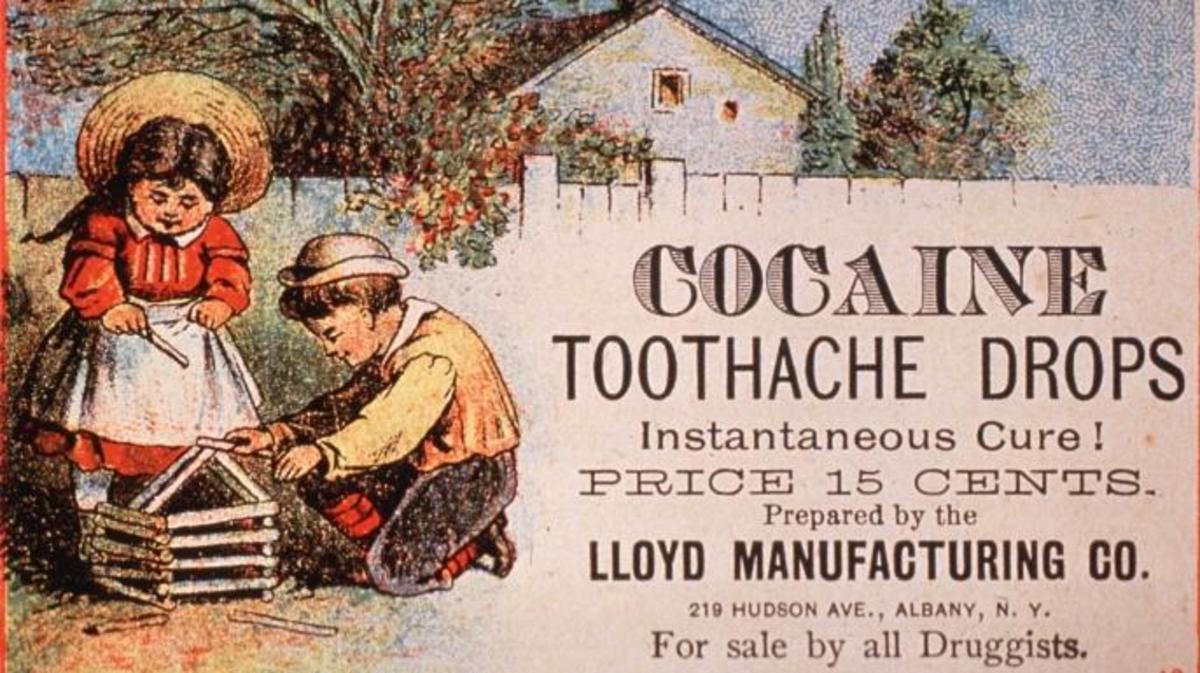 Image source/HistoryWhilst some would probably just prefer to hay fever then take cociane, this wasn't the case some people. Many believed in the late 19th century that allergy symptoms caused by pollen could be suppressed with the introduction of cocaine. Despite minimal evidence, if any to suggest this, it certainly didn't stop a few people trying it. Although I'm sure it was the hay fever that was the problem for them.
Image source/HistoryWhilst some would probably just prefer to hay fever then take cociane, this wasn't the case some people. Many believed in the late 19th century that allergy symptoms caused by pollen could be suppressed with the introduction of cocaine. Despite minimal evidence, if any to suggest this, it certainly didn't stop a few people trying it. Although I'm sure it was the hay fever that was the problem for them.Advertisement
